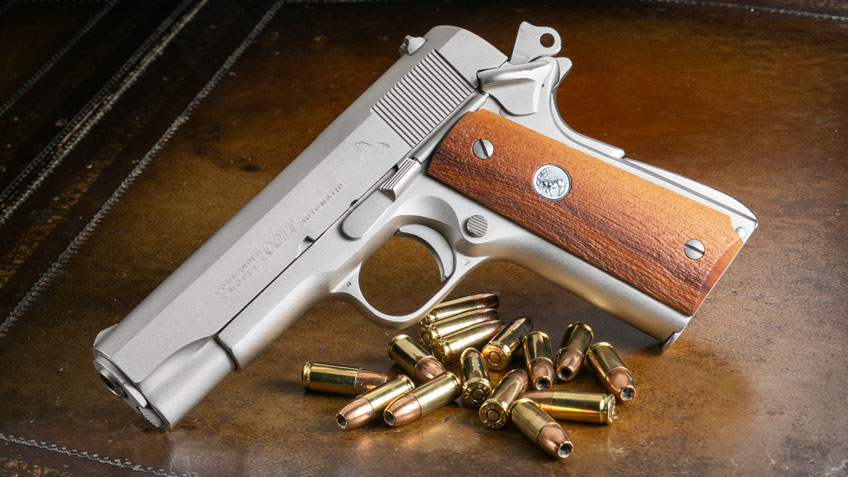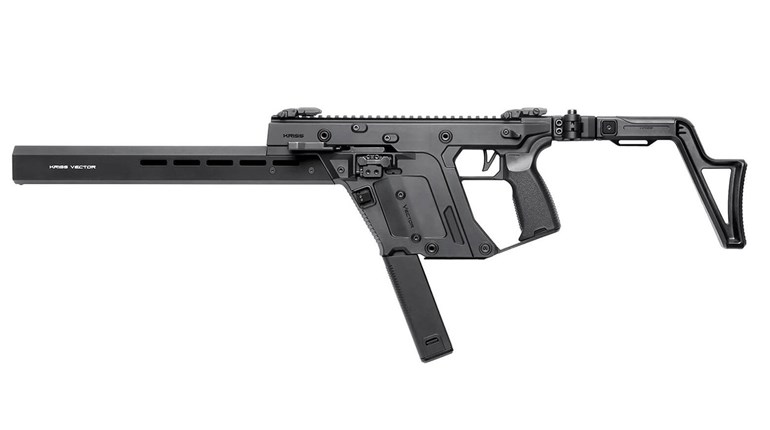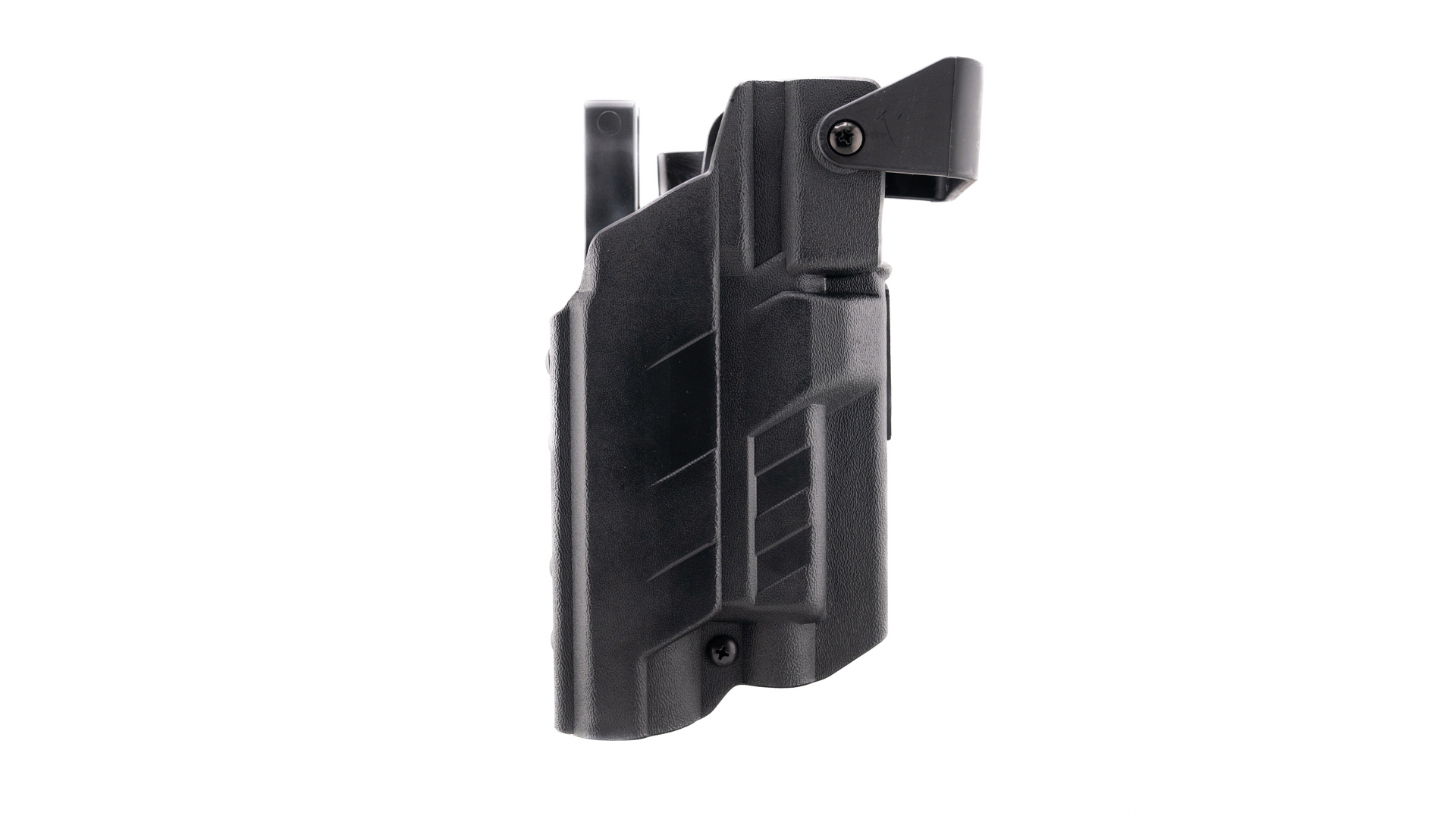
The satin-nickel-finished, steel-frame Combat Commander shown above serves as a testament to the many changes the 1911-based pistol has endured over the last 110 years.
We are now well into the second century of the 1911 service pistol and its legendary cartridge. Few firearms enjoy such a long period of solid service. Ten years ago, the centennial of this warrior’s tool was celebrated widely, and rightly so.
But, as we move toward its sesquicentennial, it is almost as though shooting folks in general have finally just accepted the full utility of the big cartridge and the Colt pistol that fires it. We know that with patents long expired, every major U.S. handgun maker catalogs its version of the grand-old service pistol. Every ammunition manufacturer offers at least a couple of loads of that stubby cartridge.
The gun was first used by Soldiers of the U.S. Army in the defense of American lives and property along our Southern border. This was in the 19-teens, just before the nation went to war in Europe. Initially made at the Colt plant in Connecticut and the Springfield Armory in Massachusetts, the pistol was in such demand as to warrant other gunmakers getting into the act. It was popular with those who used the gun to the point that a high percentage of those issued were never recovered. America was sixgun country before “Johnny Doughboy” was issued one of the new semi-autos. It hit hard, it hit often and was hugely reliable in trained hands.
There were a few little glitches in the management of the original 1911 pistol, and they got official attention in the 1920s. The result was the M1911A1 version of the Government Model. With changes to certain contours of the pistol, it was a better gun—enough as to be made in great quantity for service in World War II. The M1911A1 came out of the war with an even greater level of respect than when it entered it.
Still, it was a rather large pistol with a 5-inch barrel and overall weight of 39 ounces—empty. It was difficult to carry concealed. And rumors began to circulate about the government going to a new service sidearm. When Army Ordnance officials began to talk to Colt about a new variation of the 1911, the die was cast.
Colt, in the early 1950s, was a forward-thinking company willing to experiment deeply. It offered a range of revolvers, as well as new semi-autos for target work. One of its best ideas involved the use of lightweight alloys for major components of handguns. Colt’s Cobra revolver was an instant hit with plainclothes police officers, and it didn’t take long before the company was looking at the 1911 and reflecting on the twin problems of size and weight. Enter the Commander.
Since there was considerable interest in the 9 mm cartridge, the first Commanders were chambered for that round. But, the obvious commercial possibilities of a smaller, lighter .45 ACP were massive and Colt started making them. The Commander is functionally the same as the full-size Government Model. There are two major differences: The slide is three-quarters of an inch shorter and houses a barrel similarly shortened.
On the first Commanders, the grip tang was bit shorter and so was the distinctively different rowel hammer. The second difference was more significant. A shortened gun is a lighter gun, but when the frame of that pistol is made of aluminum, it is significantly lighter. The first Commander weighed 26 ounces, compared to 39 for a standard 5-inch M1911A1.
The idea caught on, and Colt never looked back. The company has made these handy, easy-to-carry .45s for 70 years. There have been a few modifications. While most are .45 ACPs or 9 mms, there have also been some .38 Supers and even a few .30 Lugers (for export). Over the years, the details of sights, finish and grips have varied with the times and customer preference. Like all personal-defense firearms, Commanders are carried a lot more than they are fired.
They are a good choice in the sense that the power-to-weight ratio is excellent. However, the recoil of a 26-ounce .45 ACP is snappy, particularly when the shooter has made a debatable choice in +P ammunition. The Commander began to be the go-to gun for the combat shooters of the Southwest Pistol League in California who proved that its recoil could be managed with practice.
When people began to buy Commander slides and barrels to install on steel frames, Colt saw the light and offered the same thing itself. The Combat Commander was a commercial success—an all-steel 1911-style pistol, with the 4.25-inch barrel and slide. While I had fired the early light Commanders off and on since the 1960s, I had never owned one.
The Combat version caught my fancy and I bought one in the mid-’70s. I still have and often fire this aging veteran. It has a Bar-Sto barrel (fitted by “Stoney” himself) and one-of-a-kind Novak sights. Com-manders don’t usually carry a reputation for match accuracy, but this one will put a magazine into a sub-1-inch group on command.
The light .45 ACP by Colt has been part of the warrior culture since the Korean War. In those days, Marine lieutenants stopped by Evaluators Limited in Quantico, VA, to buy one (OK, sometimes it was a Model 15 Smith & Wesson). I can also remember the lieutenant in my outfit in Vietnam who wanted one. The post office at Chu Lai was a tent, but they issued money orders. He got one for the proper amount, mailed it off to Gil Hebard in Illinois and, in a few weeks, got his pistol.
From its earliest days, we knew the Colt Commander was fightin’ iron.






































